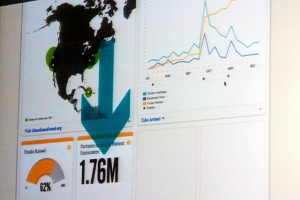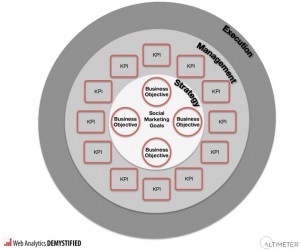The initial steps of data analysis; Collecting data from various sources, ensuring the accuracy of the data and then putting it all into a legible format. Doing the grunt work of social media analytics (or really any data analysis) is not the most fun or glamorous part of the process but through my experience I’ve learned that having this level of intimacy with your data is an important part of in ensuring the delivery of solid insight and analysis .
Getting In Close With The Numbers
Having to compile the different parts of your data puts you at a level of closeness with it that is not as easy to get otherwise. Entering in each source and dealing with all the tools you see almost instantly when there is a gap or significant change within your metrics because you see all the data points in front of you. Compare this with just getting summary data and you just get a snap shot of the entire picture of what is happening. Let’s just say this is like taking your data out for the day compared to having a quick phone call with them. One is much more effective in getting your desired result than the other.
Having Your Way with The Data:
When all of the grunt work is done and your data set is put together and prettied up you tend to already have a sense of what you want to explore when you actually go and do your analysis. You’ll know where all the sweet spots are and try to determine why things happened the way they did. Experiencing all the parts of the data as a whole rather than in separation there’s a better understanding of the linkages and causes of change in the data. You are better able to see where something went up as a result of X or Y action. By having your hands in everything means you are able to get in there and push the right buttons to get the best end result.
Growing Old Together:
In my work there have been some data sets that I’ve dealt with for a LONG time, sometimes since their inception going months back. Much like a long term relationship with a person you can get a read on when things are going as per usual or even great but you can also see when there is a significant drop off or unexpected event. In this sense your mental set is more finely tuned to see the trends and linkages within your data store. When your data set is mad at you, you know almost immediately to do something to fix it!
Setting Yourself Up For The “Money Shot”
When all is said and done, the data is all in and you’re fully into writing the report, by knowing your data you are able to tell the right story and enter in the best summary metrics to share with your client. In the end, the job of an analyst is to see the data and make sense of it in the best way possible for your specific audience. Your “money shot” in all of this is when your client is sent off with the best insight and recommendations that they can take action on. When they are happy that they are seeing improvement in their operations or learning something useful that they can apply to their business this means increased results and profit for your organization. Essentially something people will pay to see ;).




